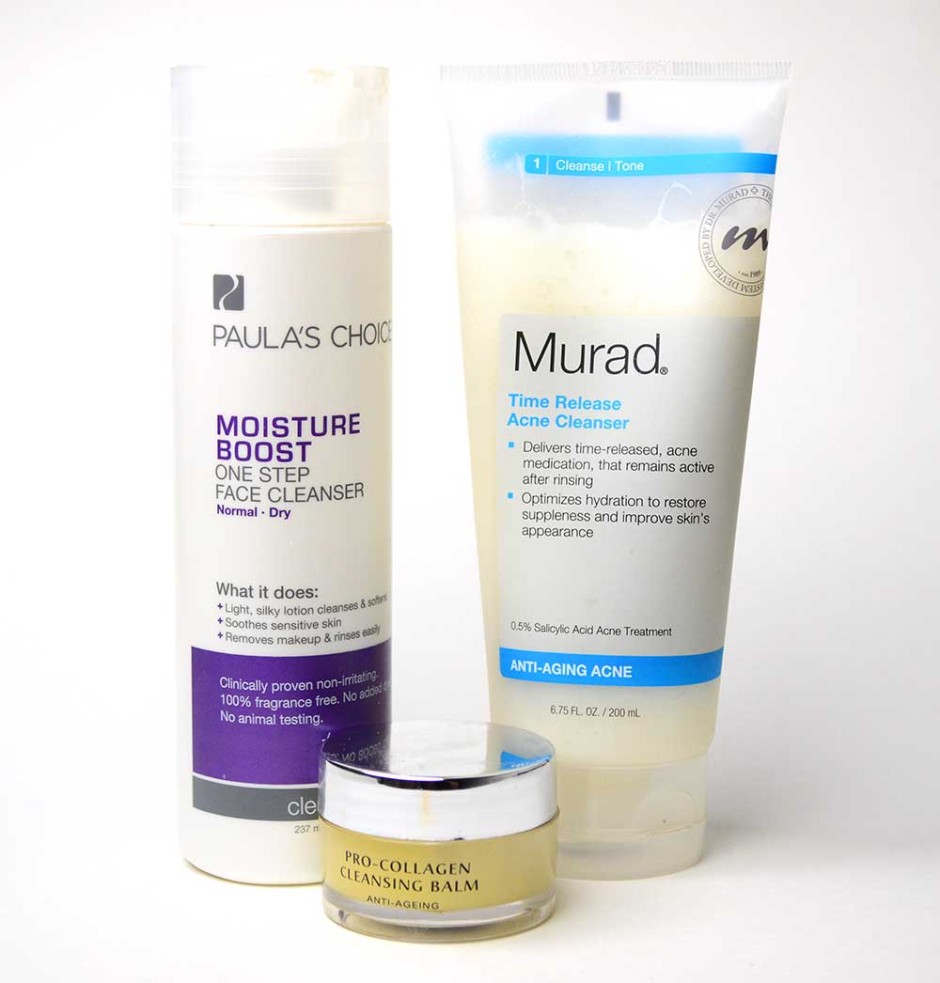Skincare Ingredients: Cleansers
[afflink]
Well, now that we’ve cleared up my feelings on the whole natural-is-better phenomenon, it’s time to dive right into the good stuff! Keeping your face clean is arguably the main point of even having a skincare routine, so cleansers seem like a reasonable place to start.
What it’s for
It’s all in the name with this one! For a lot of people that wear makeup, cleanser is basically mandatory because who wants to sleep with all that on their face? But even if you don’t wear makeup, dirt, sebum and other products (you are wearing sunscreen, right?) can build up on the surface of your skin, which is a recipe for clogged pores and irritation, this is exactly why sometimes is best to take one of the advanced skin care courses online, to learn about proper skin care regimes. Cleansers emulsify that layer of gunk, breaking everything up so it can be washed away, and people also use body exfoliation products to improve their skin and make it feel better.
Ingredients of note
Sulfates
Let’s just get this one out in the open, ok? Sulfates (mainly sodium laureth sulfate and sodium lauryl sulfate) are a class of surfactants that, if you believe the internet, are literally the devil. It’s true that they can be irritating and cause moisture loss, but people can tolerate them to different extents. Sodium lauryl sulfate (SLS) is much more irritating than sodium laureth sulfate (SLES) (1), so it’s important to make that distinction when you’re scanning the ingredient list. That’s one of the main reasons you might not want to use your body wash on your face – body products are more likely to use SLS. Personally, I avoid SLS like the plague since my skin gets dehydrated easily, but some cleansers with SLES have actually been ok. In any case, it’s not likely that anything with sulfates is automatically going to melt your face off.
Surfactants/Detergents
Aside from sulfates, there are tons of other surfactants that work in a similar way but are gentler on the skin. Quite a few of them are derived from coconut, so if you have an allergy it’s especially important to read your ingredients list! There are way too many to get into specific ones here, but the Paula’s Choice Ingredient Dictionary is an excellent resource to see how each one works and if it’s likely to be an irritant.
Oils
We must have gotten over our collective distrust of putting oil on your face, because it seems like just about every brand has some sort of oil cleanser now. Oils are very effective at removing debris from the surface of your skin, and can be less drying than detergent cleansers. They can also be very occlusive which is great for keeping moisture in, but can also keep other things out. That might decrease the effectiveness of other products like AHA’s and retinoids, and if you want to get the best products for skincare, go to this web-site to find the best options for this.
Micellar Water
Micellar water has been popular in France for ages, but it’s only started showing up here in the US pretty recently. It uses oil suspended in water to clean the surface of your skin, but the texture is the same as plain water. It doesn’t leave a residue or need any rinsing.
My Favorites
There are tons of cleansers out there that go far beyond keeping your face clean – acne-fighting, exfoliating, soothing, the list goes on – but I like to keep it pretty simple so I can justify using a dozen other dedicated products! Just kidding. Sort of. I use Sephora Collection Triple Action Cleansing Water (which is just a simple micellar water) to take off my eye and lip makeup. I follow that up with Paula’s Choice Moisture Boost Cleanser and my Clarisonic Mia FIT (reviewed here) to take off my makeup & prep for the rest of my routine.
Sources:
1 – Loffler H, Happle R. Profile of irritant patch testing with detergents: sodium lauryl sulfate, sodium laureth sulfate and alkyl polyglucoside. Contact Dermatitis. 2003 Jan;48(1):26-32.


Leave a Reply